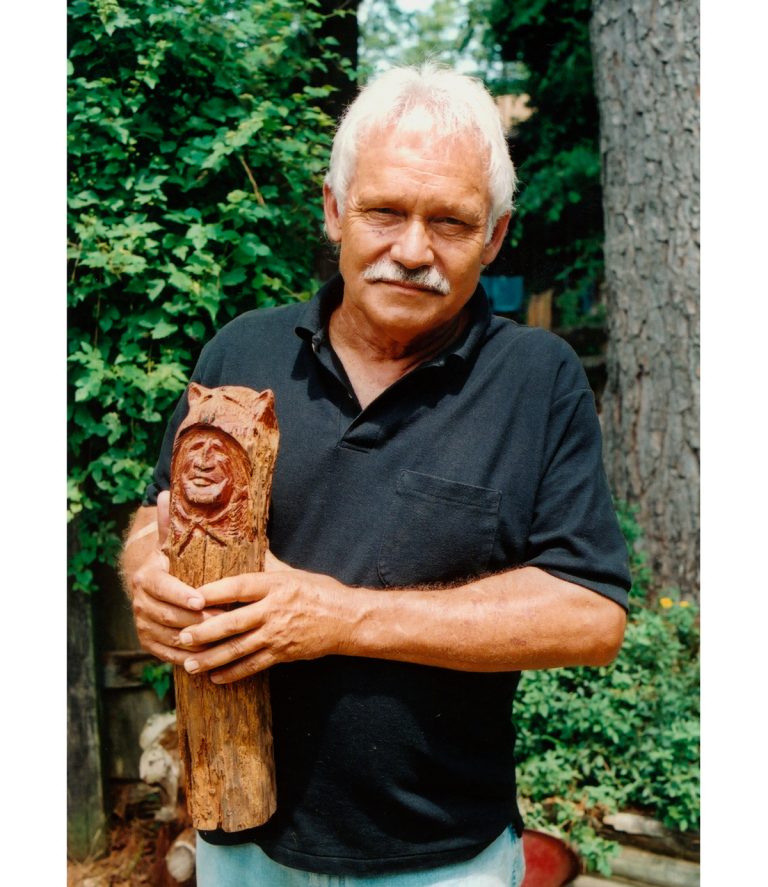As far as he knows, Jackie Woods of Kilmichael is one of the two active chainsaw carvers in Mississippi. Originally from Webster County, Woods’ father was in the sawmill business for a time. But it was not until work took him to the Great Lakes region that he was exposed to artists who used chainsaws to carve animals and human figures from logs. Woods worked for Lucent Technologies, facing a computer for most of the day, and chainsaw carving offered a physical outlet for a creativity he continues to explore.
Woods began carving in middle age, and he credits his wife Tempy, an art teacher, with speeding his development. She helped him to understand some of the elements of depth and proportion that he would otherwise have struggled with and coached him in bringing his visions to reality in wood. With specialized bars and a high-performance seven-pound chainsaw, Woods can produce carvings of bears, eagles, and other animals in incredibly short periods of time. He has done a large number of totem poles, often elaborately painted by his wife, and some on a massive scale. The largest totem pole in his yard is easily twenty feet tall and twenty-five inches across, carved from a pine that had died on his property. Even small animal carvings, such as squirrels, tend to be at least a couple of feet tall, and he can complete them in under an hour.
The speed and mechanization of chainsaw carving cause some in the crafts community to doubt its artistic merit. For Woods, the speed and showmanship of chainsaw carving constitute part of its appeal. In years past, he traveled to fairs and equipment shows, most notably the annual logging equipment show in Perry, Georgia, and carved for hours before an audience. He noted that the crowd’s attention span was short and that they wanted to see the finished product, whether a squirrel or a face, in short order. His wife helped him here as well, touching her face as a gesture to let him know that a part of the carving needed work through a system of signals they had previously conceived. The shows were wildly popular but physically exhausting. These days Woods does the programs only for schools or charity benefits. The performance aspect of chainsaw carving is especially useful for charity events. Woods notes that people will often pay more for a piece that they witness coming to life under the saw.
Woods uses local pine or preferably cedar for his pieces; however, he says they are both inferior to the basswood that comes from the Great Lakes region. When carving cedar, he uses the contrast between the dark heartwood and the light sapwood whenever possible. Woods avoids paint unless for some specific purpose such as in the totem pole work. However, he usually applies a simple finish of clear polyurethane to his finished work. Many of his pieces, at least some that I witnessed, were out in the elements and had some greater or lesser degree of deterioration about them. This was not unpleasant, however, giving them an organic appearance.
–Wiley Prewitt

